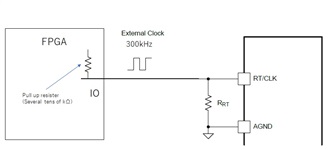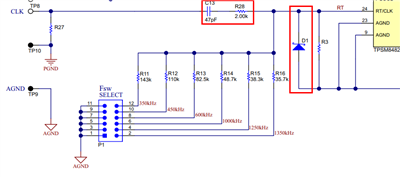Hello team,
The customer has a question how to connect between LMZ31710 RT/CLK pin and FPGA IO for external clock as below.
They would like to use RT mode at power up, then change external clock mode.
FPGA IO has a weak pull up resister (several tens of kohms) , so they are concerned that the pull up resister effect switching frequency at RT mode at power up.
So they would like to know how to connect. Would you please advise?
Best Regards,
Akihisa Tamazaki


